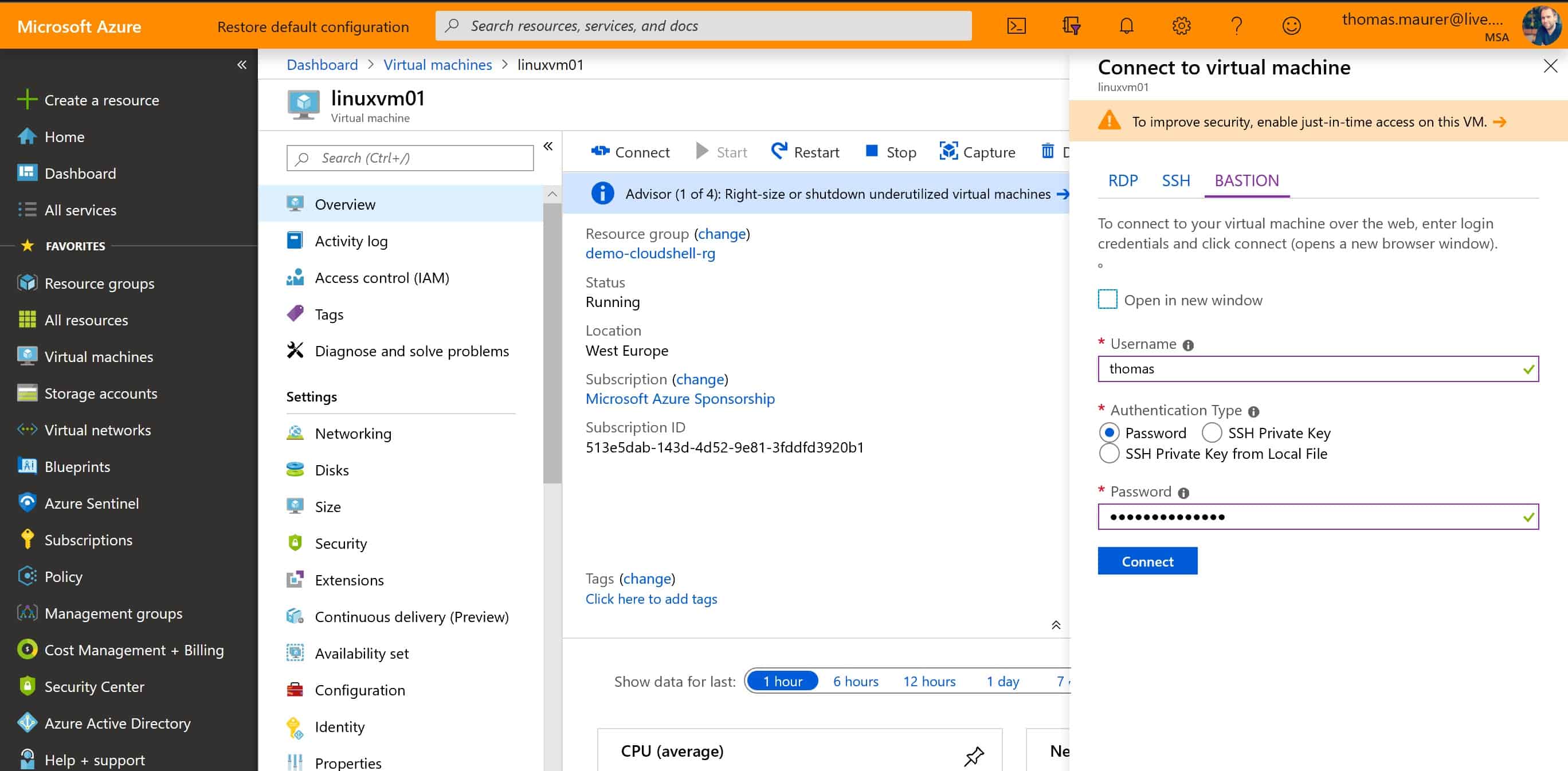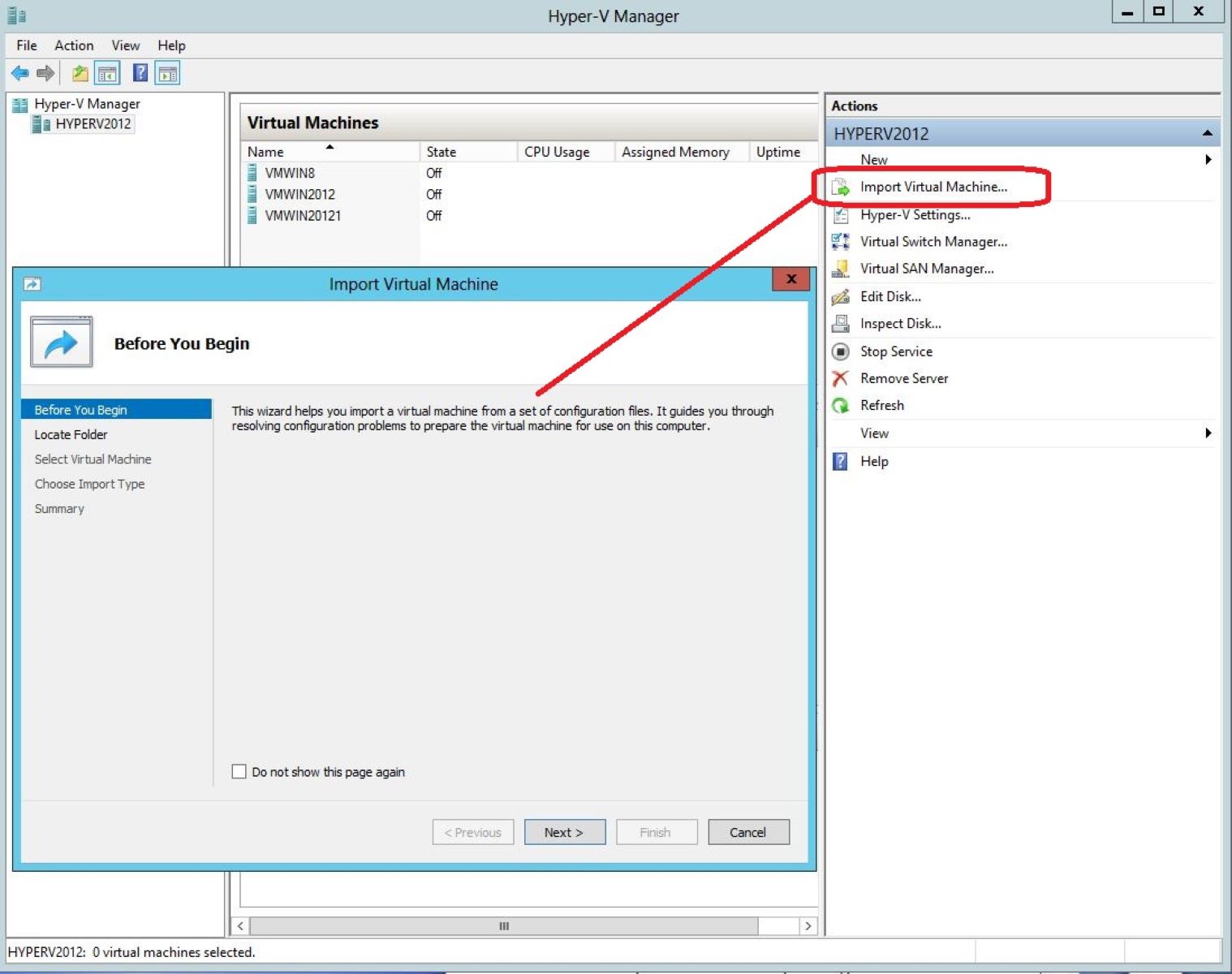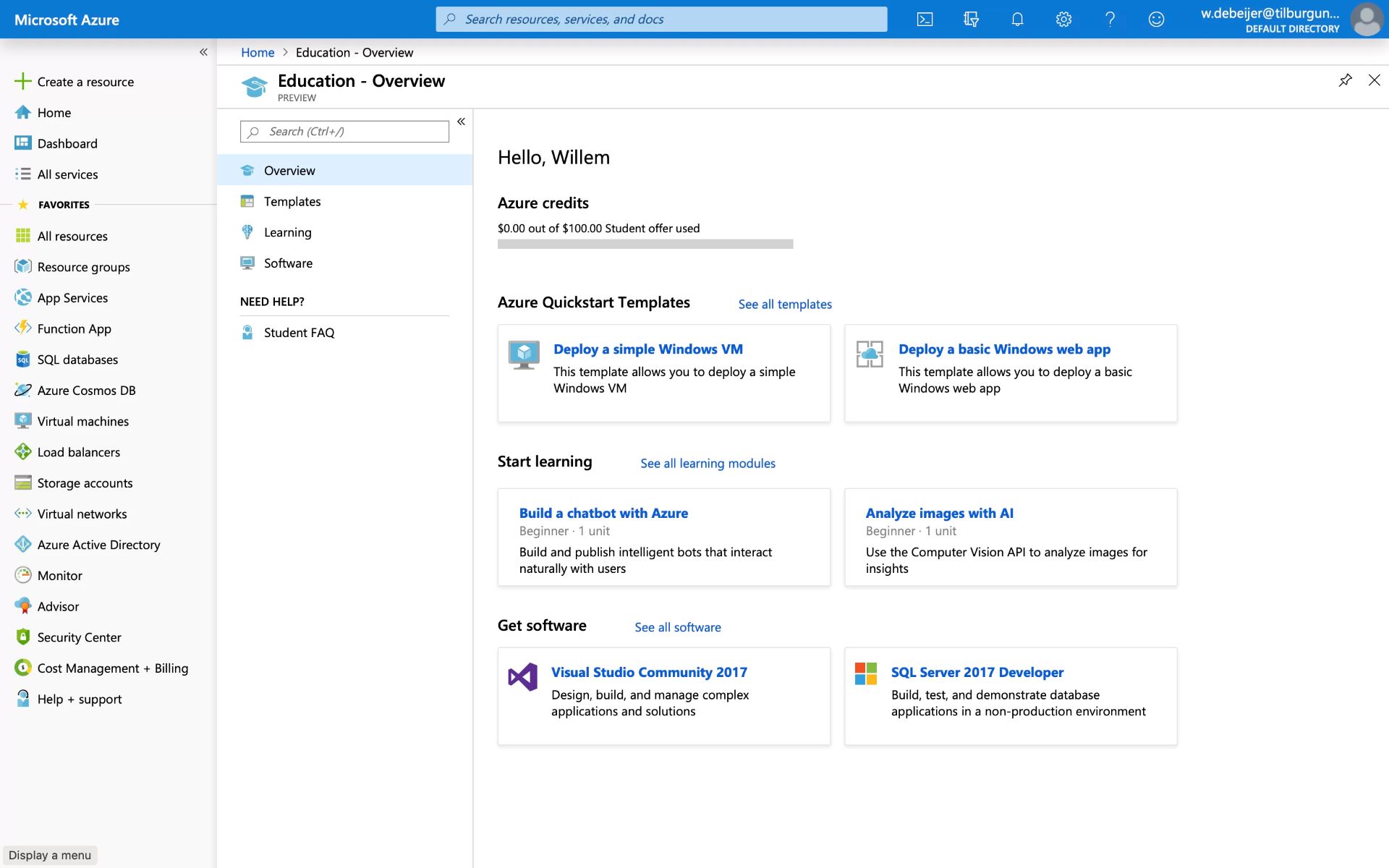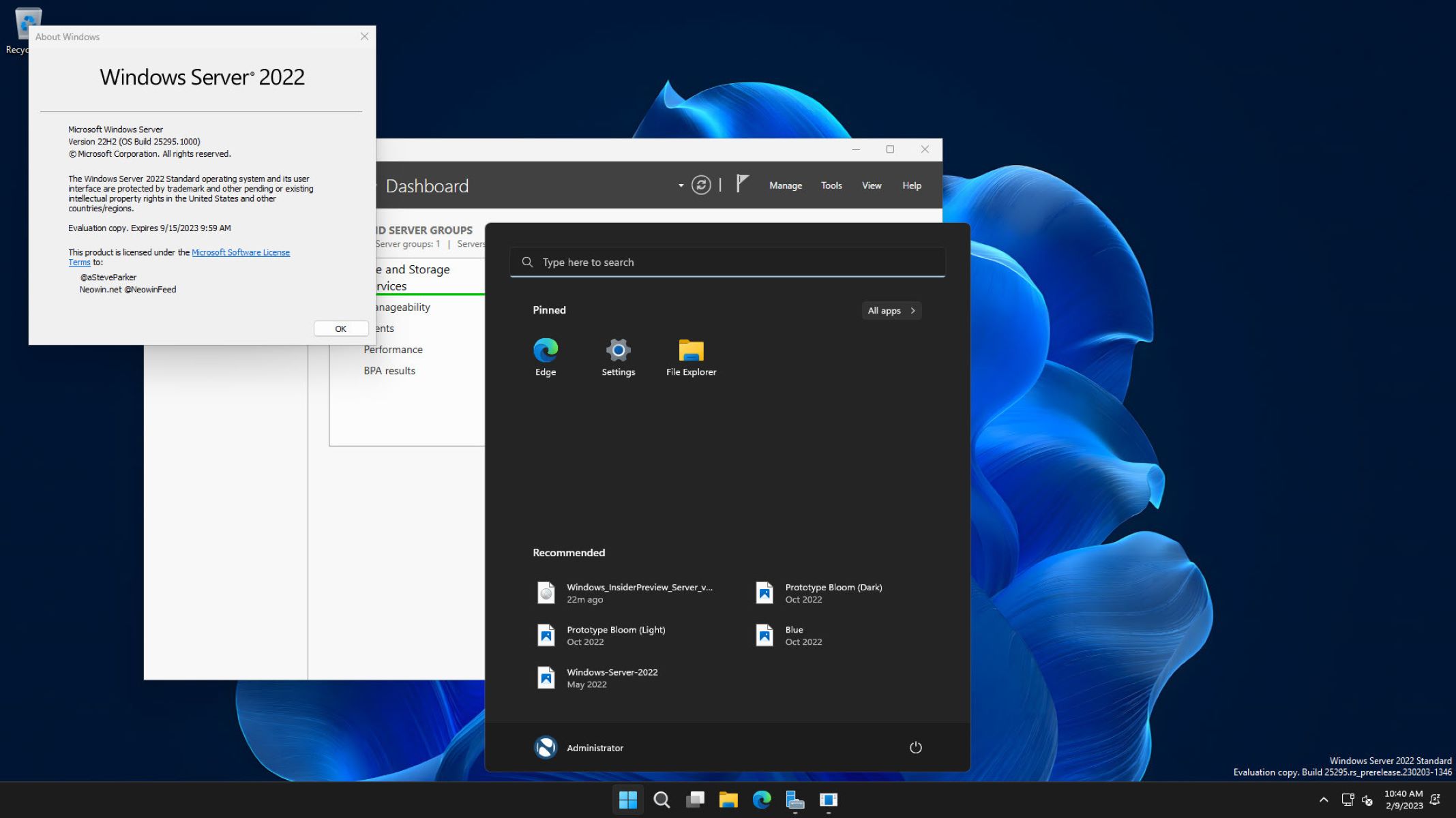Introduction
Azure Virtual Machine is a cloud computing service offered by Microsoft Azure that enables users to run applications and workloads on virtual servers hosted in the Azure cloud. It provides a scalable and flexible infrastructure for businesses and organizations to deploy their applications, websites, and services without the need to purchase and maintain physical hardware.
Azure Virtual Machine offers a wide range of benefits, including high availability, scalability, security, and cost-efficiency. It allows businesses to easily scale their resources up or down based on demand, ensuring optimal performance and reducing costs. With Azure Virtual Machine, organizations can quickly provision virtual machines and deploy applications in a matter of minutes, eliminating the need for lengthy hardware procurement and setup processes.
The service supports a variety of operating systems, including Windows, Linux, and SQL Server, giving users the flexibility to choose the platform that best suits their needs. Additionally, Azure Virtual Machine integrates seamlessly with other Azure services, such as Azure Storage and Azure Networking, enabling users to build comprehensive and robust cloud solutions.
In this article, we will explore the different types of Azure Virtual Machines, the process of creating and managing them, the pricing and cost management options, as well as the security and compliance features. We will also discuss various use cases for Azure Virtual Machines and how they can benefit different industries and organizations.
Whether you are a small business looking to migrate your infrastructure to the cloud or a large enterprise in need of a scalable and reliable computing solution, Azure Virtual Machine offers the necessary tools and capabilities to meet your requirements. Let’s dive into the world of Azure Virtual Machines and discover how they can revolutionize your business operations.
What is Azure Virtual Machine?
Azure Virtual Machine is a cloud-based infrastructure-as-a-service (IaaS) offering provided by Microsoft Azure. It allows users to create and run virtual machines in the Azure cloud, providing them with the flexibility and scalability to meet their computing needs without the hassle of managing physical servers.
An Azure Virtual Machine is essentially a virtualized server instance that can host applications, services, or even entire operating systems. It is based on Microsoft’s Hyper-V technology, which enables the creation and management of virtual machines in a highly efficient and reliable manner.
With Azure Virtual Machine, users have full administrative control over their virtual machines, giving them the flexibility to customize the environment to their specific requirements. They can choose from a range of pre-configured templates or create their own custom images to deploy virtual machines with the necessary operating system, applications, and configurations.
Azure Virtual Machine supports various operating systems, including Windows Server, Linux distributions, and even specialized platforms like SQL Server and Oracle Database. This allows users to leverage their existing skills and software investments while benefiting from the scalability and reliability of the Azure cloud.
One of the key advantages of Azure Virtual Machine is its ability to scale up or down based on demand. Users can easily increase the computing resources of their virtual machines to handle peak workloads and then scale them back down during periods of low activity. This elasticity ensures optimal performance and cost-efficiency, as users only pay for the resources they actually use.
Furthermore, Azure Virtual Machine integrates seamlessly with other Azure services, allowing users to build comprehensive and integrated solutions. They can leverage Azure Storage for durable and secure data storage, Azure Networking for secure connectivity, and Azure Security Center for enhanced security and threat protection.
In summary, Azure Virtual Machine is a powerful and flexible cloud computing service that enables users to create and manage virtual machines in the Azure cloud. It provides the scalability, reliability, and security required to meet the demands of modern businesses and organizations, without the burden of managing physical infrastructure.
Benefits of Azure Virtual Machine
Azure Virtual Machine offers numerous benefits for businesses and organizations seeking a scalable and cost-effective cloud computing solution. Let’s explore some of the key advantages:
1. Scalability and Flexibility: Azure Virtual Machine allows users to easily scale their resources up or down based on demand. Whether it’s increasing computational power during peak periods or reducing costs during off-peak hours, Azure Virtual Machine provides the flexibility to meet changing business needs.
2. Cost-Efficiency: With Azure Virtual Machine, businesses only pay for the resources they use. This pay-as-you-go pricing model eliminates the need for large upfront investments in hardware and allows organizations to optimize their budget by dynamically adjusting resource allocation.
3. Global Reach: Azure Virtual Machine is available in numerous regions worldwide, allowing businesses to deploy their applications closer to their end-users. This global reach ensures low latency and a superior user experience, irrespective of the physical location of the users.
4. High Availability: Azure Virtual Machine provides built-in redundancy and fault tolerance, ensuring high availability of applications and services. Users can leverage virtual machine scale sets and availability sets to distribute workloads across multiple instances, minimizing downtime and ensuring uninterrupted operation.
5. Security and Compliance: Azure Virtual Machine prioritizes security and compliance, offering robust built-in security features. It provides options for network isolation, data encryption, identity and access management, and compliance certifications, such as HIPAA and ISO 27001, to help organizations meet their regulatory requirements.
6. Simplified Management: Azure Virtual Machine simplifies the management of virtual machines through its intuitive portal, robust command-line tools, and comprehensive APIs. Users can automate deployments, monitor performance, and configure virtual machines using Azure’s management tools, streamlining operations and improving productivity.
7. Integration with Azure Services: Azure Virtual Machine seamlessly integrates with other Azure services, such as Azure Networking, Azure Storage, and Azure Security Center. This integration enables businesses to build comprehensive and scalable solutions by leveraging the full power of the Azure ecosystem.
8. Robust Backup and Disaster Recovery: Azure Virtual Machine offers reliable backup and disaster recovery options, ensuring the protection and continuity of business-critical data and applications. Users can easily configure automated backups, perform site-to-site replication, and implement failover and failback strategies to mitigate the impact of unexpected disruptions.
Overall, Azure Virtual Machine empowers organizations with the agility, scalability, and security required to unlock the full potential of cloud computing. By leveraging the benefits of Azure Virtual Machine, businesses can focus on their core objectives and accelerate their digital transformation journey.
Types of Azure Virtual Machines
Azure Virtual Machine provides a wide range of options when it comes to choosing the type of virtual machine that best suits your needs. Each type is optimized for specific workloads and offers varying performance, scalability, and pricing. Let’s explore some of the key types of Azure Virtual Machines:
1. General Purpose: General Purpose virtual machines are suitable for a wide range of workloads, including web servers, small databases, and development/test environments. They offer a balanced combination of CPU, memory, and storage resources, making them a versatile choice for various scenarios.
2. Compute Optimized: Compute Optimized virtual machines are designed for workloads that require high computational power, such as large-scale analytics, batch processing, and scientific simulations. They provide a high ratio of CPU to memory and are optimized for compute-intensive tasks.
3. Memory Optimized: Memory Optimized virtual machines are ideal for workloads that require a large amount of memory, such as in-memory databases, real-time analytics, and SAP HANA. These virtual machines have a high memory-to-CPU ratio, allowing for efficient processing of memory-dependent tasks.
4. Storage Optimized: Storage Optimized virtual machines are optimized for workloads that require high-performance storage, such as big data, SQL Server, and NoSQL databases. They come with local SSD storage and offer high disk throughput and low latency to meet demanding storage requirements.
5. GPU Instances: GPU Instances are specialized virtual machines that are equipped with powerful GPUs (Graphics Processing Units). They are designed for compute-intensive tasks that require parallel processing, such as machine learning, deep learning, and video rendering.
6. High-Performance Computing (HPC): High-Performance Computing virtual machines are specifically designed for high-performance computing workloads. They offer fast interconnects, low-latency networking, and high CPU and memory capabilities to support highly parallel and compute-intensive tasks.
7. Confidential Computing: Confidential Computing virtual machines provide a trusted execution environment for secure and confidential workloads. They leverage hardware-based encryption to protect data and code in use, ensuring that sensitive information remains secure even in multi-tenant environments.
These are just a few examples of the types of Azure Virtual Machines available. Each type can be further customized with various sizes and configurations to meet specific workload requirements. By selecting the appropriate type of virtual machine, businesses can optimize performance, scalability, and cost-effectiveness, ultimately enhancing their overall cloud computing experience.
How to Create an Azure Virtual Machine
Creating an Azure Virtual Machine is a straightforward process that can be completed in a few simple steps. Here’s a general overview of how to create an Azure Virtual Machine:
Step 1: Access the Azure Portal: Log in to your Azure account and navigate to the Azure Portal, the web-based interface for managing Azure resources.
Step 2: Create a Resource Group: A resource group is a logical container for grouping and managing related Azure resources. Create a new resource group or select an existing one to host your virtual machine.
Step 3: Select the Virtual Machine Type: In the Azure Portal, select “Create a resource” and search for “Virtual Machine.” Choose the desired virtual machine type based on your workload requirements.
Step 4: Configure Virtual Machine Settings: Provide the necessary details, such as the name of the virtual machine, the operating system, the size of the virtual machine, and the authentication method (SSH key or password).
Step 5: Configure Networking: Choose the virtual network and subnet where the virtual machine will be placed. Set up public IP address settings and configure the network security group to control inbound and outbound traffic.
Step 6: Storage Configuration: Select the storage account and disk type for the virtual machine. You can choose between using managed disks or unmanaged disks based on your preference and requirements.
Step 7: Review and Create: Review all the settings and configurations for the virtual machine. Once you are satisfied, click on the “Create” button to initiate the deployment process.
Step 8: Monitor and Manage: Once the virtual machine is created, you can monitor its performance, manage its configuration, and access it remotely using tools such as Azure Monitor, Azure Automation, and Azure CLI or PowerShell.
It is important to note that these steps provide a general overview of the process, and there may be additional options and considerations depending on your specific requirements. Microsoft Azure provides comprehensive documentation and guides that cover the process in more detail, allowing you to create and configure virtual machines tailored to your specific needs.
By following these steps, users can easily create and deploy Azure Virtual Machines to meet their computing needs, with the flexibility, scalability, and reliability provided by the Azure cloud.
Pricing and Cost Management
Azure Virtual Machine offers flexible pricing options and cost management tools to help businesses optimize their cloud spending. Here are some key aspects to consider when it comes to pricing and cost management for Azure Virtual Machines:
1. Virtual Machine Pricing: Azure Virtual Machine pricing is based on various factors, including the virtual machine type, size, and region. Each virtual machine type has different pricing tiers, and the cost is calculated based on the duration of usage, the number of virtual machine instances, and the associated storage and network resources.
2. Azure Reserved Virtual Machine Instances: Azure offers the option to purchase Reserved Virtual Machine Instances, which provide significant cost savings compared to on-demand instances. Users can choose to pay upfront or on a monthly basis, locking in lower prices for sustained usage over a one- or three-year term.
3. Low-Priority Virtual Machines: For non-critical workloads that can tolerate interruptions, Azure provides Low-Priority Virtual Machines at a substantially discounted price. These virtual machines are allocated from surplus capacity and are subject to being reclaimed with short notice.
4. Azure Hybrid Benefit: Users with existing on-premises licenses may be eligible for the Azure Hybrid Benefit, which allows them to apply their current licenses towards the payment of Azure Virtual Machines. This benefit can result in significant cost savings for organizations with valid licenses.
5. Cost Management Tools: Azure provides robust cost management tools to help businesses monitor and optimize their cloud spending. Azure Cost Management and Billing allows users to track usage, analyze costs, set budgets, and implement spending alerts to stay within budget limits. It also provides insights and recommendations for cost optimization.
6. Scaling and Auto-Shutdown: By leveraging Azure Automation and virtual machine scale sets, users can automate scaling and auto-shutdown processes based on predefined metrics. This enables businesses to scale resources up or down based on demand and avoid unnecessary costs associated with underutilized virtual machines.
7. Resource Consolidation: Azure Virtual Machine allows users to consolidate multiple workloads onto fewer virtual machines, reducing costs associated with running and managing multiple instances. By efficiently utilizing resources, businesses can optimize costs while maintaining performance and availability.
8. Azure Cost Estimator: Prior to deploying virtual machines, businesses can utilize the Azure Cost Estimator tool to estimate the costs associated with various virtual machine configurations, helping them make informed decisions and plan their budgets accordingly.
It’s important for businesses to regularly analyze and optimize their usage patterns, leverage cost management tools, and take advantage of cost-saving options offered by Azure to ensure cost-efficient utilization of Azure Virtual Machines.
Scaling and Managing Azure Virtual Machines
Azure Virtual Machines offer built-in capabilities for scaling resources and efficient management, allowing businesses to optimize performance, handle fluctuations in demand, and streamline operations. Here are some key aspects of scaling and managing Azure Virtual Machines:
1. Vertical Scaling: Azure Virtual Machines allow for vertical scaling by increasing or decreasing the size of the virtual machine. This can be done manually or automatically based on predefined metrics such as CPU usage or memory utilization. Vertical scaling ensures that resources are allocated according to the workload requirements, optimizing performance and cost-efficiency.
2. Horizontal Scaling: Azure Virtual Machines can also scale horizontally by adding or removing instances in a virtual machine scale set. This allows businesses to handle increasing workloads by distributing the load across multiple virtual machines, providing better performance and improved fault tolerance. Horizontal scaling is particularly useful for handling variable or unpredictable workloads.
3. Azure Autoscale: Azure Virtual Machines can leverage the Azure Autoscale feature, which automatically adjusts the number of running virtual machine instances based on predefined scaling rules. Autoscaling ensures that resources are dynamically allocated to meet demand while optimizing costs by scaling down during periods of lower utilization.
4. Azure Virtual Machine Scale Sets: Virtual Machine Scale Sets simplify the management of a group of identical virtual machines. Businesses can deploy and manage a set of identical virtual machines as a single entity, making it easier to apply updates, scale resources, and balance workloads. Scale sets support autoscaling and provide high availability and fault tolerance.
5. Azure Virtual Machine Extensions: Extensions are additional features and functions that can be installed on Azure Virtual Machines to enhance their capabilities. These extensions cover a wide range of functionalities, such as VM diagnostics, monitoring agents, security features, and configuration management tools. They enable businesses to customize and manage virtual machines according to their specific requirements.
6. Azure Monitor: Azure Monitor provides comprehensive monitoring and diagnostics for Azure Virtual Machines. It allows businesses to track performance metrics, set up alerts, and gain insights into the health and availability of virtual machines. With Azure Monitor, businesses can proactively identify and resolve performance issues, ensuring optimal performance and availability.
7. Azure Automation: Azure Automation enables businesses to automate the management and configuration of Azure Virtual Machines. It offers features such as configuration management, desired state configuration, and runbook automation to streamline operations, reduce manual tasks, and ensure consistency across virtual machines.
8. Azure Resource Manager: Azure Resource Manager is a unified management platform that allows businesses to manage and organize Azure resources, including Virtual Machines, through a single interface. It provides capabilities for deploying, managing, and monitoring resources, simplifying management tasks and improving efficiency.
With these scaling and management features, businesses can effectively optimize the performance, reliability, and cost-efficiency of their Azure Virtual Machines. By applying appropriate scaling strategies and leveraging the available management tools, organizations can streamline operations, improve resource utilization, and adapt to changing business needs with ease.
Availability and High Availability
Availability and high availability are critical considerations when deploying Azure Virtual Machines to ensure that applications and services remain accessible and functional even in the face of disruptions or failures. Azure Virtual Machines offer several features and options to maximize availability. Let’s explore them:
1. Availability Sets: Availability sets are logical groupings of Azure Virtual Machines that provide built-in redundancy and fault tolerance. Placing virtual machines in an availability set ensures that they are distributed across different fault domains and update domains, minimizing the impact of single points of failure and planned maintenance events.
2. Fault Domains: Fault domains represent the underlying hardware infrastructure within a data center. Azure ensures that each virtual machine instance in an availability set is deployed to a separate fault domain. This ensures that a single hardware failure or maintenance event does not impact all virtual machines in the availability set.
3. Update Domains: Update domains facilitate a controlled and sequential update process for virtual machines within an availability set. Azure ensures that virtual machine instances in different update domains are updated one at a time, reducing the possibility of downtime caused by simultaneous updates.
4. Virtual Machine Scale Sets: Virtual Machine Scale Sets provide high availability by automatically distributing virtual machines across multiple fault domains and update domains. If a virtual machine instance fails, the scale set automatically replaces it and redistributes the workload to other instances, ensuring continuity of service.
5. Azure Load Balancer: Azure Load Balancer distributes incoming traffic across multiple virtual machines, providing scalability and ensuring that applications remain accessible even if a virtual machine becomes unavailable. Load balancing can be configured both internally within a virtual network and externally for internet-facing applications.
6. Disaster Recovery: Azure provides disaster recovery solutions that enable businesses to replicate their virtual machines to a secondary region for data protection and business continuity. Azure Site Recovery (ASR) is a comprehensive disaster recovery solution that automates replication, failover, and failback processes, minimizing downtime and data loss in the event of a disaster.
7. Service-Level Agreements (SLAs): Azure Virtual Machines are covered by Microsoft’s SLA, guaranteeing a certain level of availability. For example, the SLA for single-instance virtual machines in an availability set is 99.95% uptime, while the SLA for virtual machine scale sets is 99.99% uptime.
8. Monitoring and Alerts: Azure provides monitoring and alerting capabilities, such as Azure Monitor and Azure Service Health, to keep track of the health and availability of Azure Virtual Machines. Users can set up proactive alerts to be notified of any issues or performance degradation, allowing them to take immediate corrective actions.
By leveraging these availability and high availability features, businesses can ensure that their Azure Virtual Machines remain accessible, resilient, and highly available. By reducing the risk of downtime and providing mechanisms for quick recovery, organizations can maintain the continuity of their critical applications and services.
Security and Compliance
Security and compliance are paramount considerations when deploying Azure Virtual Machines to protect sensitive data and ensure regulatory compliance. Azure provides robust security features and compliance certifications to meet the stringent requirements of businesses. Let’s explore some of the key aspects of security and compliance in Azure Virtual Machines:
1. Data Encryption: Azure Virtual Machines offer data-at-rest and data-in-transit encryption to protect data from unauthorized access. Data disk encryption and Azure Disk Encryption use BitLocker encryption technology to encrypt virtual machine disks. Additionally, Azure Storage Service Encryption ensures that data stored in Azure Storage is automatically encrypted.
2. Network Security: Azure Virtual Machines can be secured using Network Security Groups (NSGs) that enforce access control rules at the network level. NSGs provide inbound and outbound traffic filtering, allowing businesses to define firewall rules and restrict network traffic to and from virtual machines based on source IP addresses, ports, and protocols.
3. Identity and Access Management: Azure Active Directory (Azure AD) provides centralized identity management and authentication for Azure Virtual Machines. It enables businesses to control access to virtual machines through user accounts, group memberships, and role-based access control (RBAC), ensuring that only authorized users can access resources.
4. Security Center: Azure Security Center offers advanced threat detection and security management for Azure Virtual Machines. It provides real-time security alerts, vulnerability assessments, and recommendations to help businesses proactively identify and mitigate security risks. It also offers integration with Azure AD Identity Protection to detect and prevent unauthorized access attempts.
5. Compliance Certifications: Azure has an extensive list of compliance certifications, such as ISO 27001, GDPR, HIPAA, PCI DSS, and FedRAMP. These certifications ensure that Azure Virtual Machines meet industry-specific compliance standards and regulations. By leveraging Azure Virtual Machines, businesses can ensure that their workloads comply with data protection and privacy requirements.
6. Security Patching: Azure Virtual Machines receive regular security updates and patches to protect against known vulnerabilities. Azure provides automated patching options, allowing businesses to schedule and apply patches to virtual machines to ensure the latest security updates are in place, reducing the risk of security breaches.
7. Auditing and Monitoring: Azure provides comprehensive monitoring and auditing capabilities, including Azure Monitor and Azure Security Center, to track and analyze activity logs and security events in Azure Virtual Machines. These tools enable businesses to detect and respond to security incidents promptly.
8. Data Residency and Sovereignty: Azure allows businesses to choose the geographic location where their data will be stored. This ensures compliance with data residency and sovereignty regulations, providing businesses with control over where their data resides.
By leveraging these security features and compliance certifications, businesses can confidently deploy Azure Virtual Machines while ensuring the protection of their data, meeting regulatory requirements, and mitigating security risks.
Use Cases for Azure Virtual Machines
Azure Virtual Machines are a versatile cloud computing solution that can be applied to a wide range of use cases. Here are some common scenarios where Azure Virtual Machines provide significant value:
1. Website and Application Hosting: Azure Virtual Machines provide an ideal platform for hosting websites and applications. Businesses can deploy web servers, content management systems (CMS), databases, and backend services on virtual machines to deliver scalable and highly available web applications.
2. Development and Testing Environments: Azure Virtual Machines offer a cost-effective solution for creating development and testing environments. Developers can quickly provision pre-configured virtual machines to build, test, and deploy software applications, ensuring consistency and eliminating the need for dedicated on-premises hardware.
3. Data Analytics and Big Data Processing: Azure Virtual Machines can be scaled to handle large-scale data analytics workloads. Whether it’s running Apache Hadoop, Apache Spark, or Microsoft’s Azure HDInsight, businesses can leverage virtual machines to process and analyze vast amounts of data efficiently.
4. Machine Learning and AI: Azure Virtual Machines provide the compute power required for training and deploying machine learning models and artificial intelligence algorithms. Organizations can leverage virtual machines to build and deploy models for image recognition, natural language processing, predictive analytics, and other AI applications.
5. Enterprise Resource Planning (ERP) Systems: Azure Virtual Machines are well-suited for hosting ERP systems such as Microsoft Dynamics, SAP Business One, or Oracle E-Business Suite. Virtual machines provide the scalability, security, and flexibility needed to handle the resource-intensive demands of enterprise-level applications.
6. High-Performance Computing (HPC): Azure Virtual Machines offer the computational power required for high-performance computing workloads. Whether it’s scientific simulations, financial modeling, or rendering, businesses can utilize virtual machines to perform complex calculations and simulations efficiently.
7. Disaster Recovery: Azure Virtual Machines can be leveraged for disaster recovery by replicating critical applications and workloads to a secondary Azure region. In the event of a disruption, businesses can quickly failover to the secondary region, ensuring business continuity and minimizing downtime.
8. Hybrid Cloud Deployments: Azure Virtual Machines enable organizations to implement hybrid cloud deployments, seamlessly integrating on-premises infrastructure with Azure. Virtual machines can be used to extend on-premises applications, migrate workloads to the cloud, or implement a hybrid development and testing environment.
These are just a few examples of the diverse use cases for Azure Virtual Machines. With their scalability, flexibility, and wide range of configurations, businesses can leverage virtual machines to meet their unique computing requirements across various industries and application domains.
Conclusion
Azure Virtual Machines offer a powerful and flexible solution for businesses and organizations seeking scalable and reliable cloud computing resources. With a range of options for virtual machine types, extensive management capabilities, and robust security features, Azure Virtual Machines empower organizations to deploy and manage their applications with ease.
Throughout this article, we explored the various aspects of Azure Virtual Machines, including what they are, their benefits, types, the process of creating and managing them, pricing and cost management, scalability options, availability and high availability features, security and compliance considerations, as well as different use cases where they excel.
By leveraging Azure Virtual Machines, businesses can enjoy the advantages of cloud computing, such as scalability, cost efficiency, and flexibility, without the burden of managing physical infrastructure. They can focus on their core objectives and accelerate their digital transformation journey by leveraging the comprehensive and integrated solutions provided by Azure.
It is important for businesses to evaluate their specific requirements and leverage the appropriate features and capabilities offered by Azure Virtual Machines. Whether it’s hosting websites and applications, performing data analytics, running machine learning models, implementing disaster recovery strategies, or supporting high-performance computing workloads, Azure Virtual Machines provide the foundational infrastructure needed for success.
As the cloud computing landscape continues to evolve, Azure Virtual Machines remain a reliable and robust solution for organizations of all sizes and industries. With continuous innovation, security enhancements, and extensive support, Microsoft Azure provides a comprehensive ecosystem that enables businesses to unlock their full potential in the cloud.

























